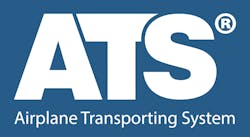Prototype Aircraft Taxi System will be Built in Ardmore
ATS World Wide is building an electric-powered, automated aircraft tug prototype in Ardmore.
The tug would allow jets to taxi around airports without using their engines, saving fuel, increasing engine life and reducing emissions and noise. Vice President and CEO Vince Howie said it would also free up pilots to focus on checklists and other cockpit duties instead of manually navigating taxiways and traffic on the ground.
Howie served as director of aerospace and defense for the Oklahoma Department of Commerce until he left government service earlier this year. He met ATS World Wide founder Stan Malicki during one of Commerce's annual trips to the Paris Air Show and helped bring the company from Poland to Oklahoma.
Malicki was born in Warsaw and escaped Eastern Bloc Communism in 1977. Before founding ATS World Wide, he grew one of the largest polypropylene pipe manufacturing businesses in Europe.
The system was developed with engineering help from Oklahoma State University and will be installed over the next four months in a ramp area at the Ardmore Municipal Airport. This first version will replicate an aircraft's pushback from the gate, which is now performed by tug trucks.
Howie said the pushback system could be brought to market this summer.
"It does everything that the current tugs and tow dollies do," Howie said. "The smaller airports were getting a lot of pressure from the [Environmental Protection Agency] to get rid of their gas-powered tow dollies and tugs because they drip fuel and oil on the ground and send emissions out. And they were looking for some type of electric system."
The Aircraft Towing System will use a 400-horsepower electric car motor to drive a pull cart through a 4-foot-wide underground channel. Steel plates cover the top of the channel, leaving a 1.5-inch gap on the ground that's narrow enough for vehicles and small aircraft to pass over it.
Along with taxiing to and from the runway, other applications could include moving aircraft around an airport for maintenance. Howie said another benefit to an automated taxi system is efficiency. OSU researchers estimated an airport could see 30% more capacity without adding gates.
"We've got a lot of interest from that piece alone," Howie said. "[Airports] are always looking at how to add more gates or terminals, and this way they could do it without either one of those."
———
©2019 The Oklahoman
Visit The Oklahoman at www.newsok.com
Distributed by Tribune Content Agency, LLC.
